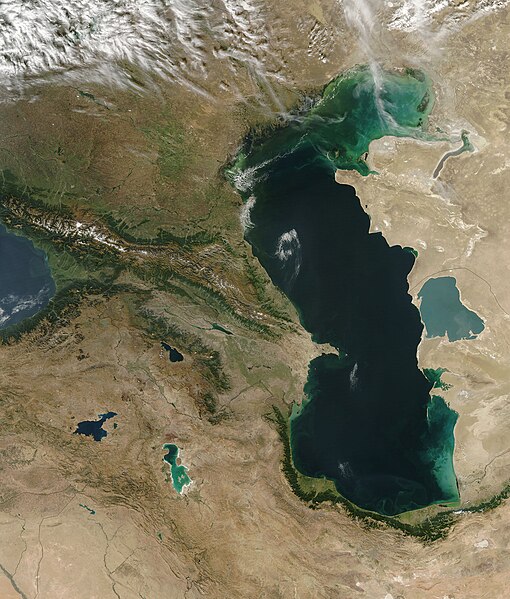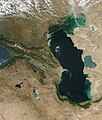ملف:Satellite image of the Caucasus-Caspian Region.jpg

حجم هذه المعاينة: 510 × 599 بكسل. الأبعاد الأخرى: 204 × 240 بكسل | 409 × 480 بكسل | 654 × 768 بكسل | 872 × 1٬024 بكسل | 1٬703 × 2٬000 بكسل.
الملف الأصلي (1٬703 × 2٬000 بكسل حجم الملف: 1٫29 ميجابايت، نوع MIME: image/jpeg)
تاريخ الملف
اضغط على زمن/تاريخ لرؤية الملف كما بدا في هذا الزمن.
| زمن/تاريخ | صورة مصغرة | الأبعاد | مستخدم | تعليق | |
|---|---|---|---|---|---|
| حالي | 05:44، 26 أكتوبر 2005 |  | 1٬703 × 2٬000 (1٫29 ميجابايت) | Brian0918 | Caspian Sea and Georgia Sometimes referred to as the Caucasus Isthmus, the Caucasus-Caspian Region is a mixing-pot for scores of cultures. Due in part to its geographic isolation and having been in the path of numerous Eurasian migrations over the cent |
استخدام الملف
الصفحتان التاليتان تستخدمان هذا الملف:
الاستخدام العالمي للملف
الويكيات الأخرى التالية تستخدم هذا الملف:
- الاستخدام في ast.wikipedia.org
- الاستخدام في bg.wikipedia.org
- الاستخدام في en.wikipedia.org
- الاستخدام في fr.wikipedia.org
- الاستخدام في fr.wiktionary.org
- الاستخدام في gcr.wikipedia.org
- الاستخدام في ky.wikipedia.org
- الاستخدام في mg.wikipedia.org
- الاستخدام في nn.wikipedia.org
- الاستخدام في no.wikipedia.org
- الاستخدام في oc.wikipedia.org
- الاستخدام في pt.wikibooks.org
- الاستخدام في sq.wikipedia.org


